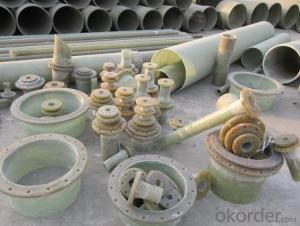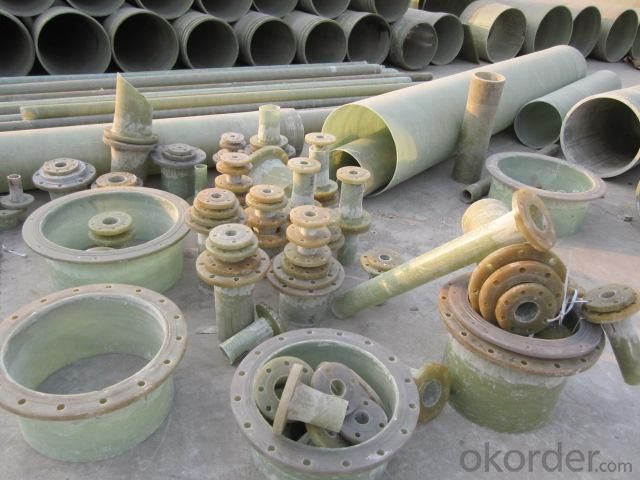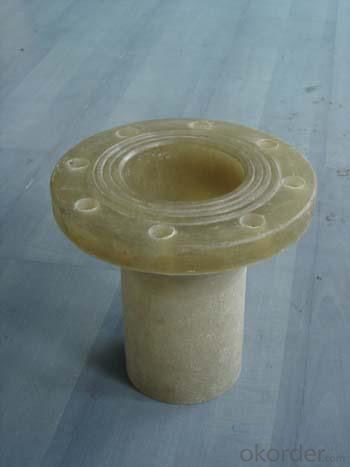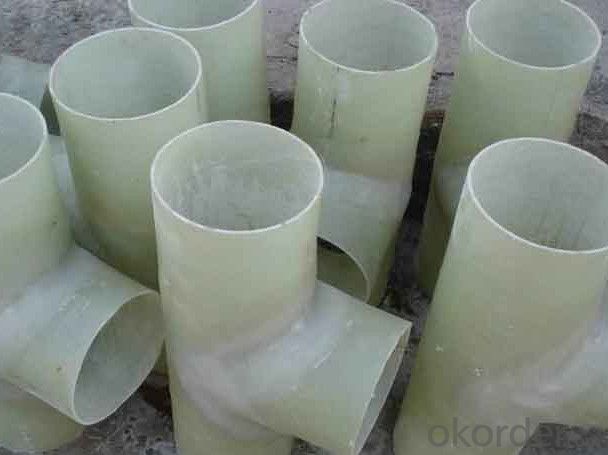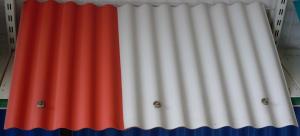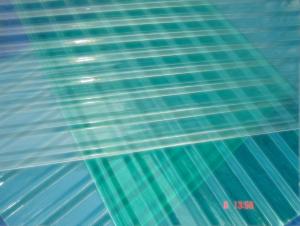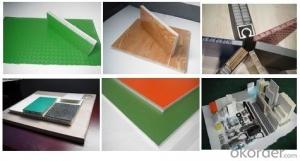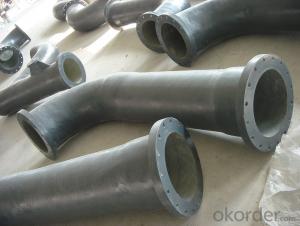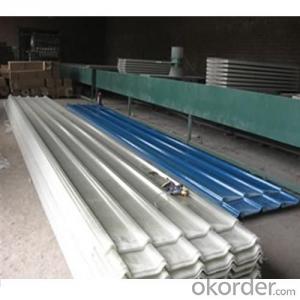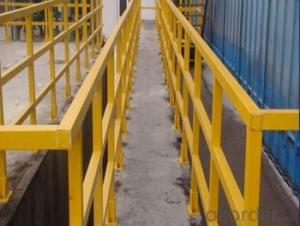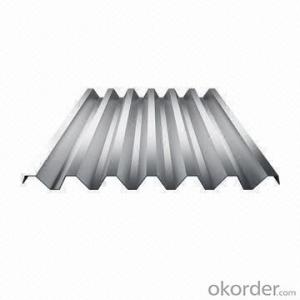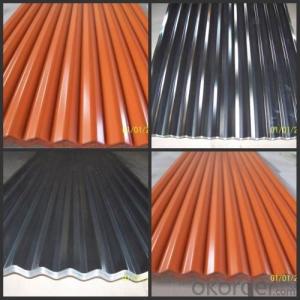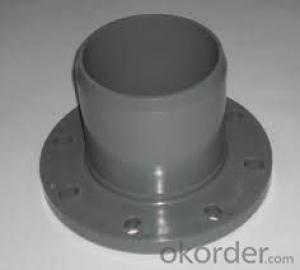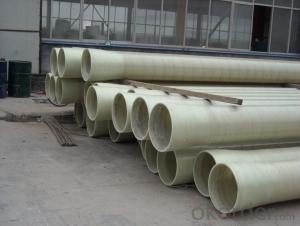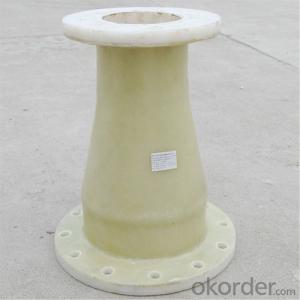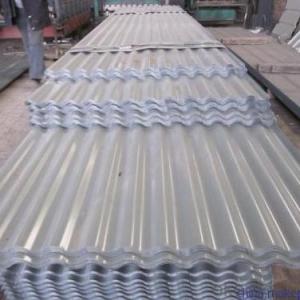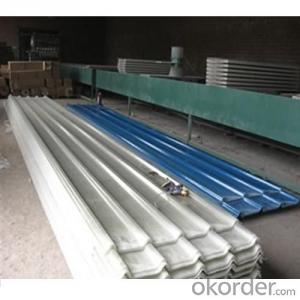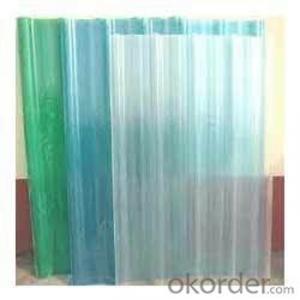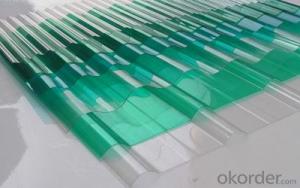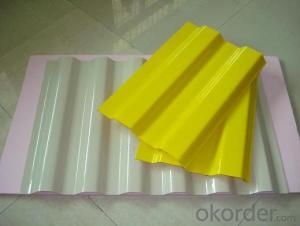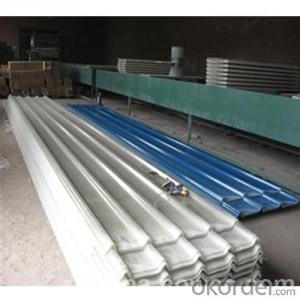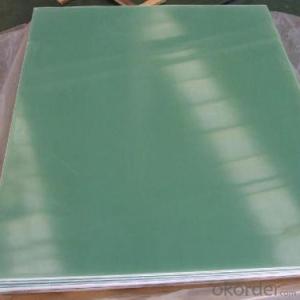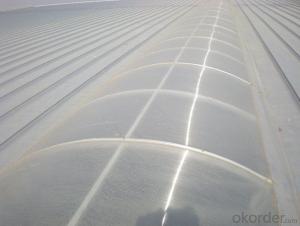FRP Roofing Panel - Fiberglass Reinforced Pipe Fittings at Any Shape
- Loading Port:
- China main port
- Payment Terms:
- TT or LC
- Min Order Qty:
- 10 kg
- Supply Capability:
- 100000 kg/month
OKorder Service Pledge
OKorder Financial Service
You Might Also Like
Specifications
FRP water pipe fittings
1.Safety
2.Applicability
3.Durability
4.Economy
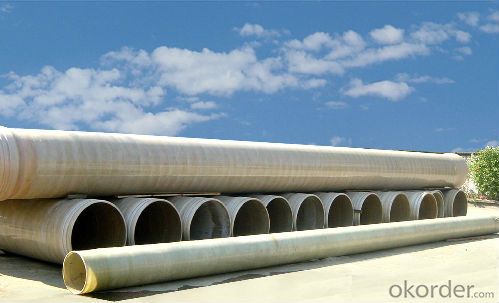
FRP Pipe Fitting
1.Safety
2.Applicability
3.Durability
4.Economy

Features
1.Medium and low pressure pipe 0.6MPa2.5 MPa
2.High pressure pipe5.5MPa24 MPa
3.Mobile gravity pipe (which can be used when the pressure is under 0.6MPa)
4.Vacuum tube, external pressure pipe or siphon
If you have interest in the FRP pipe, please provide the following parameters: media, pressure and the use of the environment (overhead or buried), temperature, stiffness requirements, connections.
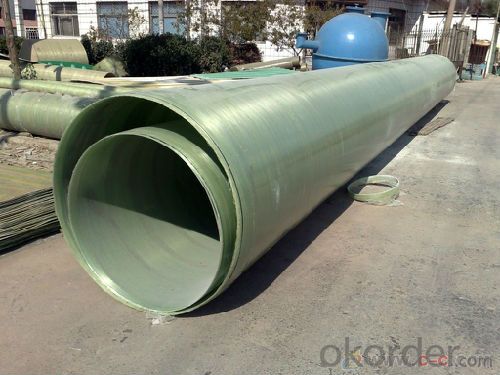
- Q: Are FRP roofing panels suitable for use in agricultural buildings?
- Yes, FRP (Fiberglass Reinforced Plastic) roofing panels are highly suitable for use in agricultural buildings. FRP panels offer a range of benefits that make them ideal for such applications. Firstly, FRP roofing panels are highly durable and long-lasting. They are resistant to impact, weathering, and corrosion, which is extremely beneficial in agricultural buildings where exposure to harsh environmental conditions is common. This durability ensures that the panels can withstand the demands of agricultural operations and maintain their structural integrity for an extended period. Secondly, FRP panels are lightweight yet strong. This makes them easy to install and reduces the need for additional structural support, saving time and costs during construction. The lightweight nature of FRP panels also allows for easier handling and transportation, making them a practical choice for agricultural buildings. Additionally, FRP panels offer excellent insulation properties. They provide thermal insulation, helping to regulate temperature and reduce energy consumption within the agricultural building. This is particularly advantageous for buildings that require a controlled environment, such as livestock housing or storage facilities. Furthermore, FRP roofing panels are non-porous, which means they are resistant to mold, mildew, and bacterial growth. This is crucial for agricultural buildings where hygiene and cleanliness are essential, ensuring a healthy environment for both animals and produce. Lastly, FRP panels are available in a variety of colors, allowing for customization and aesthetic appeal. This can be important for agricultural buildings that are visible to the public or need to blend in with the surrounding landscape. In conclusion, FRP roofing panels are highly suitable for use in agricultural buildings due to their durability, lightweight nature, insulation properties, resistance to mold and bacteria, and aesthetic options. These panels provide a reliable and cost-effective solution for agricultural structures, ensuring a long-lasting and efficient building envelope.
- Q: Can FRP roofing panels be used for theaters?
- Yes, FRP (Fiberglass Reinforced Plastic) roofing panels can be used for theaters. FRP panels are lightweight, durable, and have excellent light transmission properties, making them suitable for use in theaters where natural light is desired. Additionally, FRP panels are resistant to corrosion, impact, and UV radiation, making them a practical and cost-effective choice for roofing in theater settings.
- Q: Are FRP roofing panels environmentally friendly?
- Yes, FRP (Fiberglass Reinforced Plastic) roofing panels can be considered environmentally friendly for several reasons. First, FRP is a highly durable material that has a long lifespan, reducing the need for frequent replacements and minimizing waste. Additionally, FRP panels are lightweight, which means they require less energy to transport and install, resulting in a lower carbon footprint compared to heavier roofing materials. Furthermore, FRP panels are resistant to corrosion, chemicals, and UV radiation, which extends their lifespan and reduces the need for maintenance and chemical treatments. This reduces the use of harmful substances and minimizes the environmental impact associated with maintenance activities. Moreover, FRP roofing panels are often made from recycled materials or are themselves recyclable at the end of their lifespan. The ability to recycle FRP panels reduces the amount of waste going to landfills and contributes to a more sustainable waste management system. Lastly, FRP roofing panels have excellent insulation properties, which can help reduce the energy consumption of buildings by maintaining comfortable interior temperatures and reducing the reliance on heating or cooling systems. This energy efficiency contributes to a lower carbon footprint and a more environmentally friendly building operation. Overall, while it is important to consider the specific manufacturing processes and practices of individual FRP roofing panel manufacturers, FRP roofing panels are generally considered to be environmentally friendly due to their durability, recyclability, energy efficiency, and reduced maintenance requirements.
- Q: Can FRP roofing panels be used for sheds?
- Yes, FRP roofing panels can be used for sheds. FRP (Fiberglass Reinforced Plastic) roofing panels are lightweight, durable, and have excellent resistance to weathering and UV rays. These qualities make them suitable for sheds as they provide a long-lasting and low-maintenance roofing solution. Additionally, FRP panels are easy to install and offer good insulation properties, making them a practical choice for shed construction.
- Q: Are FRP roofing panels resistant to fading or discoloration?
- Yes, FRP (Fiberglass Reinforced Plastic) roofing panels are generally resistant to fading and discoloration. FRP panels are manufactured using a special gel coat that is applied to the surface during the production process. This gel coat contains UV inhibitors that help protect the panels from the damaging effects of the sun's ultraviolet rays. These inhibitors slow down the fading process and prevent the panels from discoloring over time. Furthermore, FRP roofing panels are known for their durability and long-lasting performance. The gel coat provides an additional layer of protection against fading, discoloration, and other environmental factors. It helps maintain the original color and appearance of the panels, even after years of exposure to sunlight, rain, and other weather conditions. However, it is important to note that excessive exposure to intense sunlight and harsh weather conditions over an extended period can still cause some degree of fading or discoloration in FRP roofing panels. Therefore, regular maintenance and occasional cleaning may be necessary to ensure the panels retain their original aesthetic appeal. Overall, FRP roofing panels offer excellent resistance to fading and discoloration, making them a reliable choice for various roofing applications.
- Q: Can FRP roofing panels be used for both residential and commercial carports?
- Yes, FRP (Fiberglass Reinforced Plastic) roofing panels can be used for both residential and commercial carports. FRP panels are lightweight, durable, and have excellent resistance to weathering, making them suitable for various applications, including carports. They provide protection from the elements and can withstand harsh weather conditions, making them ideal for both residential and commercial carports.
- Q: Are FRP roofing panels resistant to bird droppings or other organic waste?
- Indeed, FRP roofing panels possess resistance against bird droppings and other forms of organic waste. The sleek texture of FRP panels hampers the adherence of bird droppings, making it effortless for rain or cleaning to wash them away. Furthermore, FRP panels are renowned for their impermeability, thus reducing the likelihood of organic waste or stains penetrating the material. Consequently, FRP roofing panels prove to be an exceptional option for regions prone to bird activity or other organic waste, as they can effortlessly uphold their cleanliness and aesthetic appeal.
- Q: Do FRP roofing panels require any special certifications or approvals?
- Yes, FRP roofing panels typically require special certifications or approvals depending on the specific building codes and regulations in each region. These certifications ensure that the panels meet certain safety standards and performance criteria, providing assurance to customers and authorities that they can be used in construction projects. It is advisable to consult local authorities or building professionals to determine the specific certifications and approvals required for FRP roofing panels in a particular area.
- Q: Are FRP roofing panels resistant to electrical conductivity?
- Yes, FRP (Fiberglass Reinforced Plastic) roofing panels are resistant to electrical conductivity. The fiberglass material used in these panels does not conduct electricity, making them a safe choice for roofing in areas where electrical conductivity may be a concern.
- Q: Are FRP roofing panels resistant to damage from tree branches or debris?
- Yes, FRP roofing panels are highly resistant to damage from tree branches or debris. Their strong and durable composition makes them capable of withstanding impact and preventing punctures or cracks, ensuring the panels remain intact even in the presence of such external forces.
Send your message to us
FRP Roofing Panel - Fiberglass Reinforced Pipe Fittings at Any Shape
- Loading Port:
- China main port
- Payment Terms:
- TT or LC
- Min Order Qty:
- 10 kg
- Supply Capability:
- 100000 kg/month
OKorder Service Pledge
OKorder Financial Service
Similar products
Hot products
Hot Searches
Related keywords
